Thanks Ken--the flywheel is steel. I have let a few things out for water-jet cutting, but usually if I can do it on my mill or lathe I do it myself. I never let out enough work to get discounted prices. There is absolutely nothing I can learn from hogging out all the material on a flywheel like the one I am using on this build.
You are using an out of date browser. It may not display this or other websites correctly.
You should upgrade or use an alternative browser.
You should upgrade or use an alternative browser.
Building the Trevithick engine
- Thread starter Brian Rupnow
- Start date

Help Support Home Model Engine Machinist Forum:
This site may earn a commission from merchant affiliate
links, including eBay, Amazon, and others.
I had to step back and have another look at all the rods and supports which I had in place to operate the valve.--There were far too many. So--I spent a couple of hours this morning redoing them, and managed to eliminate quite a few. I have sent the flywheel drawing out to a waterjet cutter and he will call me when it is finished. I purchased a piece of welded steel tubing for the main boiler body. It is 4" outside diameter with a 3/16" wall thickness. Of course this was slightly different than my original model, but in this case it was cheaper/faster to change my model to accommodate the pipe size.
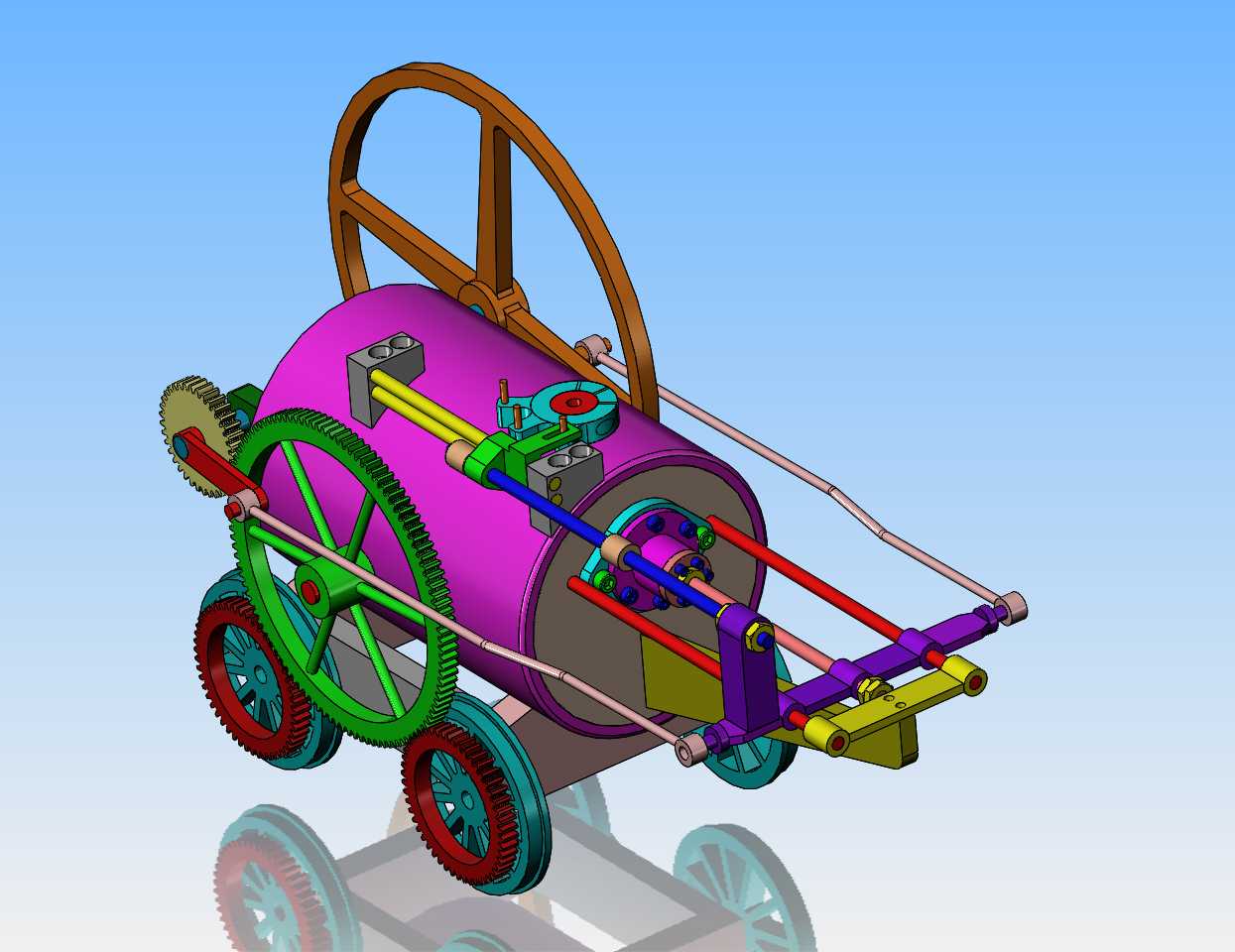

Yesterday I made a new rod end for the cylinder, and machined a new separate flange, which weirdly enough doesn't get bolted to anything on the cylinder. It does bolt to the outside of the boiler endplate and is there for show, but nothing functional. Today I cut the boiler tube to the correct length on my lathe. That steel tube had some kind of nasty varnish on the outside diameter, so I used my angle grinder and then my jitterbug sander to clean up the outside diameter while the tube was turning in the lathe. Tomorrow I will pick up some new material to make the boiler end-plates from, and Tuesday I pick up my water-jet cut flywheel. Most of this engine will get painted, so I'm not too concerned about using a combination of steel and aluminum parts.
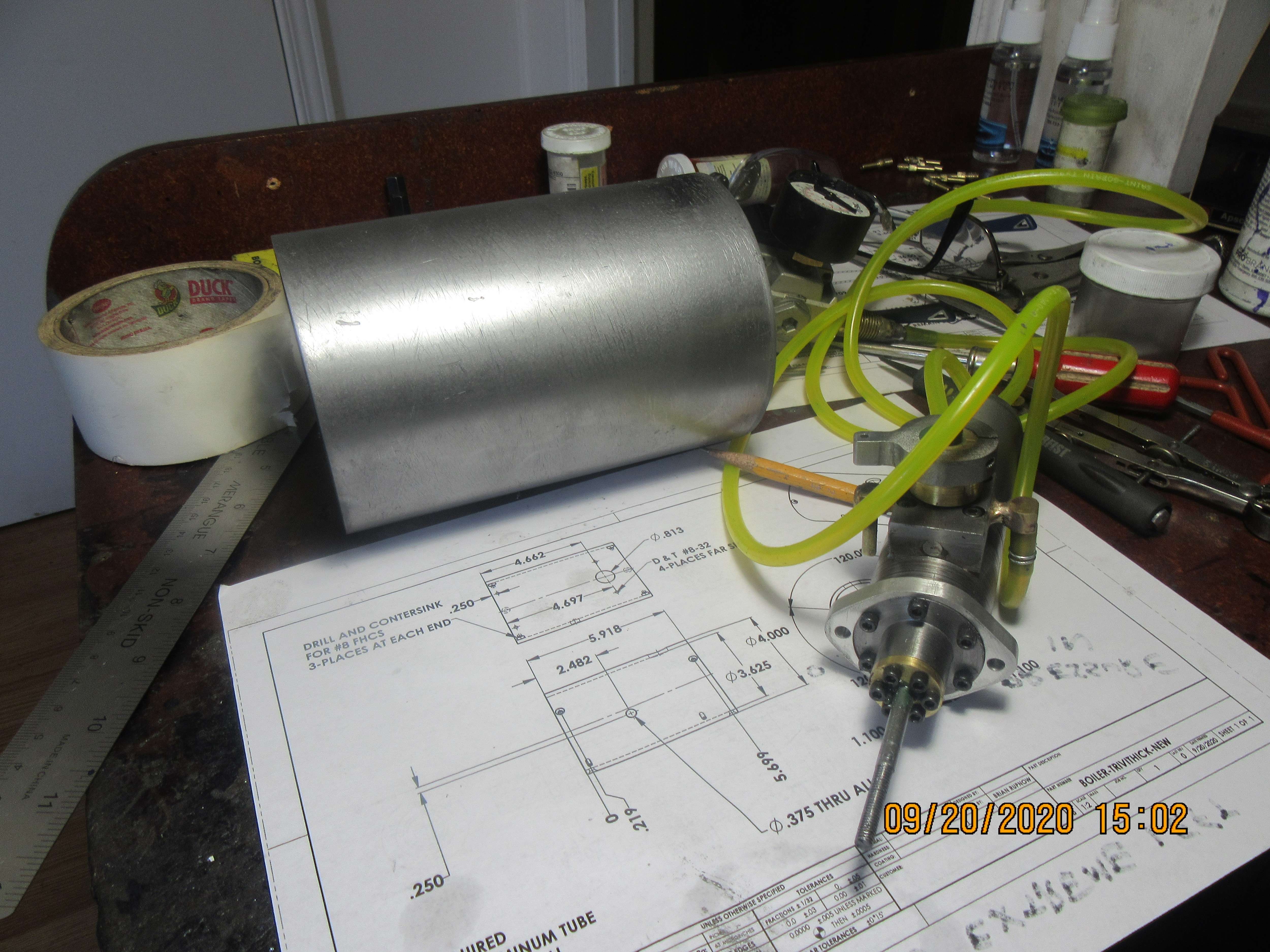

Anatol
Well-Known Member
Love this engine..!
thanks for pointing out this video series - its good, while not quite Fred Dinah.
I was quite impressed with this one on machine tools
Anatol
Well-Known Member
I think this is going to work. So far, I have only tested it with the "Blow your guts out" method, and when the spindle is turned so that the slots don't align with the port you are blowing in, you can't blow.--When they are aligned, you can. I know, that's a pretty cheesy way to test something, but it's cheap and quick. I still have to make the cap which attaches to the end of the spindle which doesn't have a flange, and compresses the o-rings. I will make that last part tomorrow, and hopefully the valve will function the way I want it to. I am attaching a video link about Trevithick's engine, and about 13 minutes in you can see an animation of the same valve as built by Trevithick over 200 years ago.
Brian
thanks for updates on this project. Its a really great one and I'm paying attention. The puffing devil video is a really good video. I'm fascinated by Trevithicks osciialting valve, (technically not a 'rotary' valve) since I'd come up with a similar design myself. The received wisdom is that rotary valves don't work- many have tried and failed. But I guess this has a lot to do with what pressures and speeds one is working with- lubrication and seals being major issues. I've got a buddy whop repairs brass instruments and similar kinds of oscilating valves are often used in them. As I understand it they are slightly conical and lapped down to 10 micron or finer.
Now that, boys and girls, is a beautiful thing!! Water jet cutting leaves great edges that need very little clean-up. If it wasn't so expensive, I would have more of it done. The flywheel is laying on top of a bunch of plates which will be finished before the end of the day using conventional machining techniques.
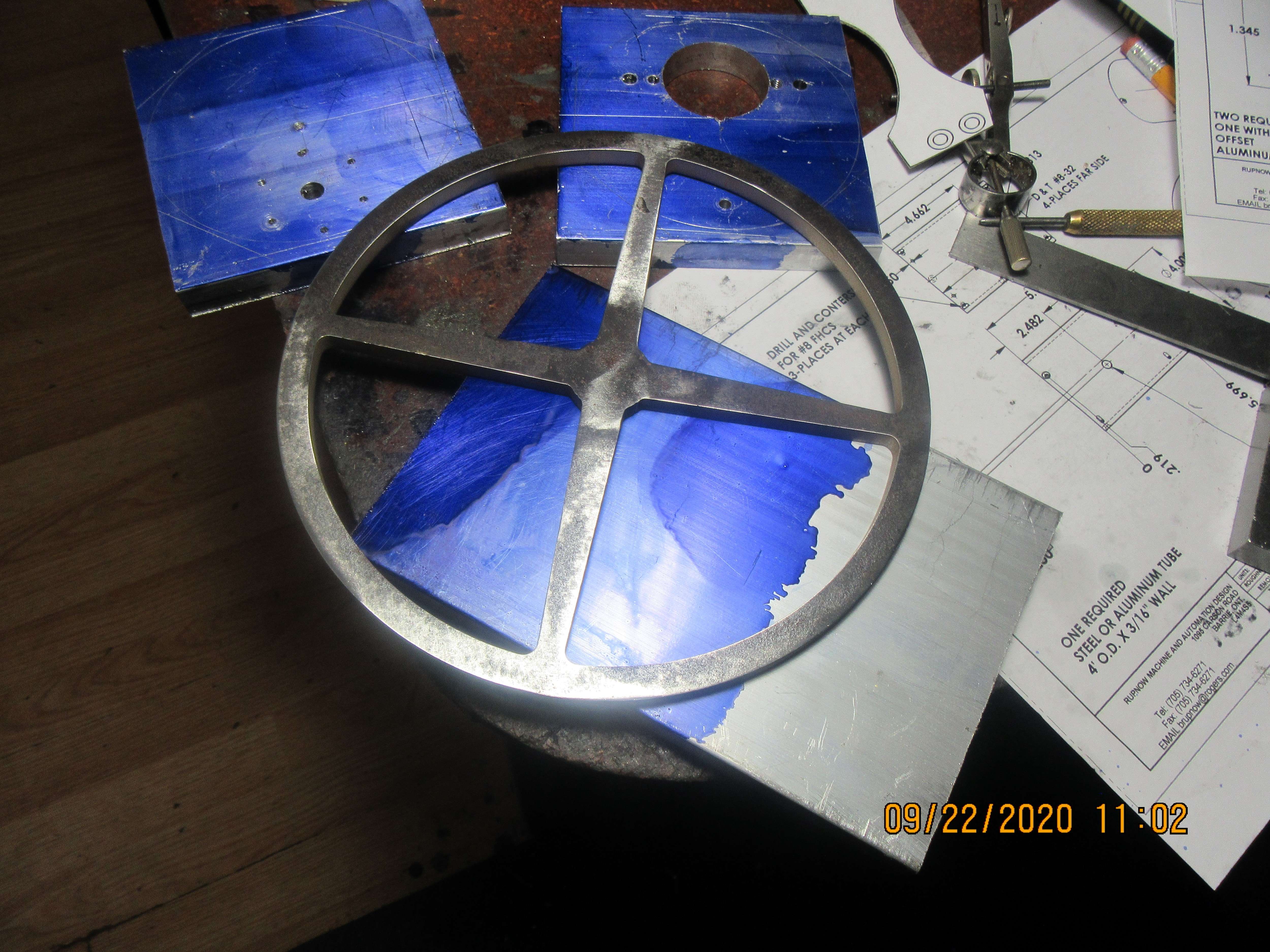


$34.74
$49.99
Becker CAD 12 3D - professional CAD software for 2D + 3D design and modelling - for 3 PCs - 100% compatible with AutoCAD
momox Shop
![DreamPlan Home Design and Landscaping Software Free for Windows [PC Download]](https://m.media-amazon.com/images/I/51kvZH2dVLL._SL500_.jpg)
$0.00
DreamPlan Home Design and Landscaping Software Free for Windows [PC Download]
Amazon.com Services LLC

$599.00
$699.00
FoxAlien Masuter Pro CNC Router Machine, Upgraded 3-Axis Engraving All-Metal Milling Machine for Wood Acrylic MDF Nylon Carving Cutting
FoxAlien Official

$39.99
$49.99
Sunnytech Low Temperature Stirling Engine Motor Steam Heat Education Model Toy Kit For mechanical skills (LT001)
stirlingtechonline

$99.99
AHS Outdoor Wood Boiler Yearly Maintenance Kit with Water Treatment - ProTech 300 & Test Kit
Alternative Heating & Supplies
I haven't ran off. There is a lot of time spent on fitting and creating new platework, and I didn't want to post every single part that I made. The cylinder is fitted into the boiler, with a little bit of design change to allow for clearances. The plate stands that support the boiler and provide bearing surfaces for the axles are almost finished, but as you can see, they haven't been drilled for axles yet. Tomorrow I will finish those plates and machine two more that run parallel to the boiler, and drill and tap the boiler shell for the bolts which holds the end stands in place. The wheels are going to be the last parts made for this engine. I can actually go ahead and make all the parts required to make the engine run without finishing the wheels and the gears.
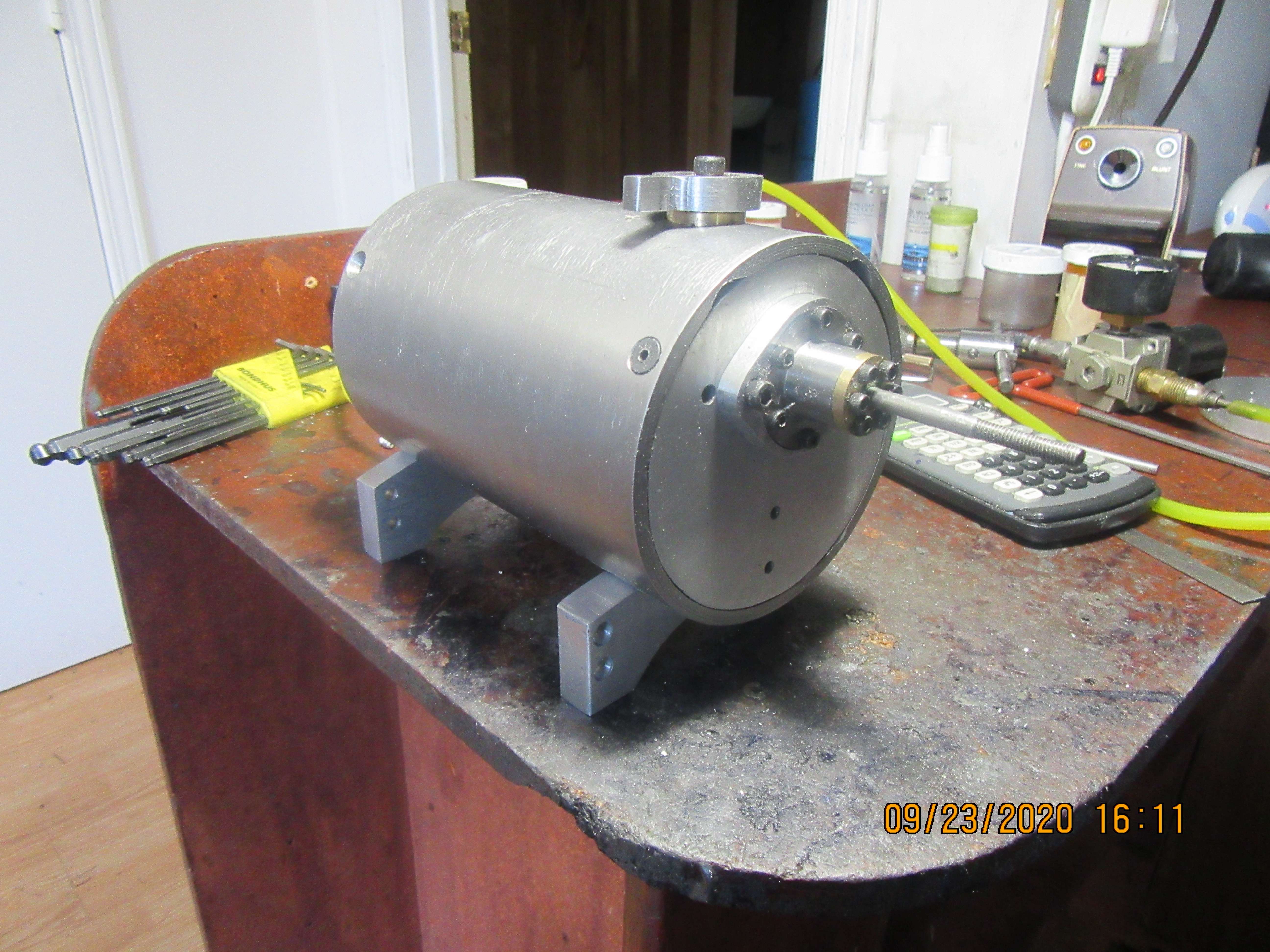

Todays job was to finish all of the axle brackets and assemble them to the boiler shell. This gets a bit tricky, because with no real suspension, if things are a bit off you end up with one wheel out of the four "up in the air".--It won't matter so much on this model, because it's not going to be a high miler, but I do like to get it right.
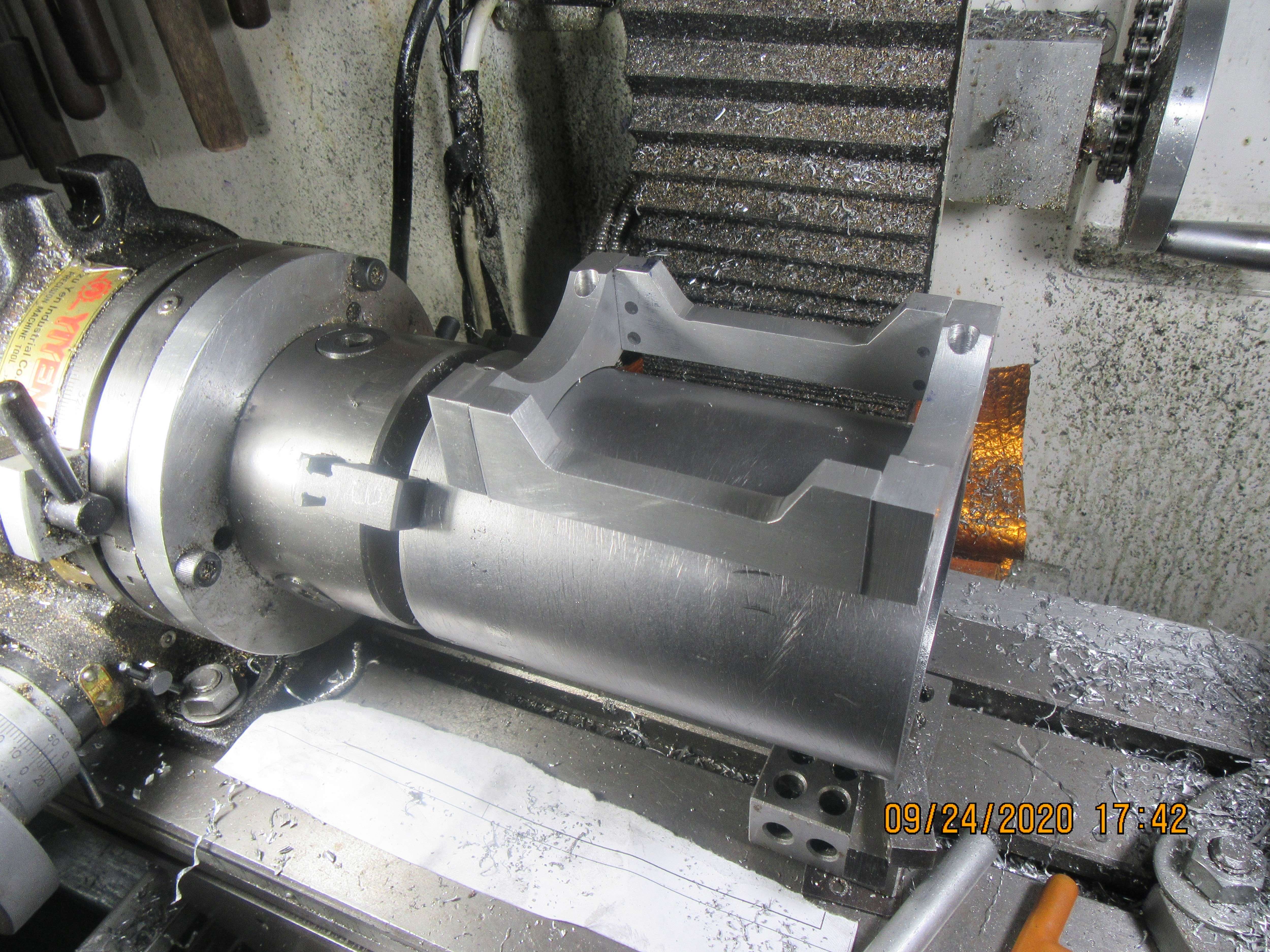

Thanks Brian, we are in for a another treat, of show tell and learn, hope you put the drawings up also, you do such good work, thanks again for sharing with us, Joe
And behold, the great horned beast!! Is it not a beautiful thing? I think it's a Rupnowsaurus!!!
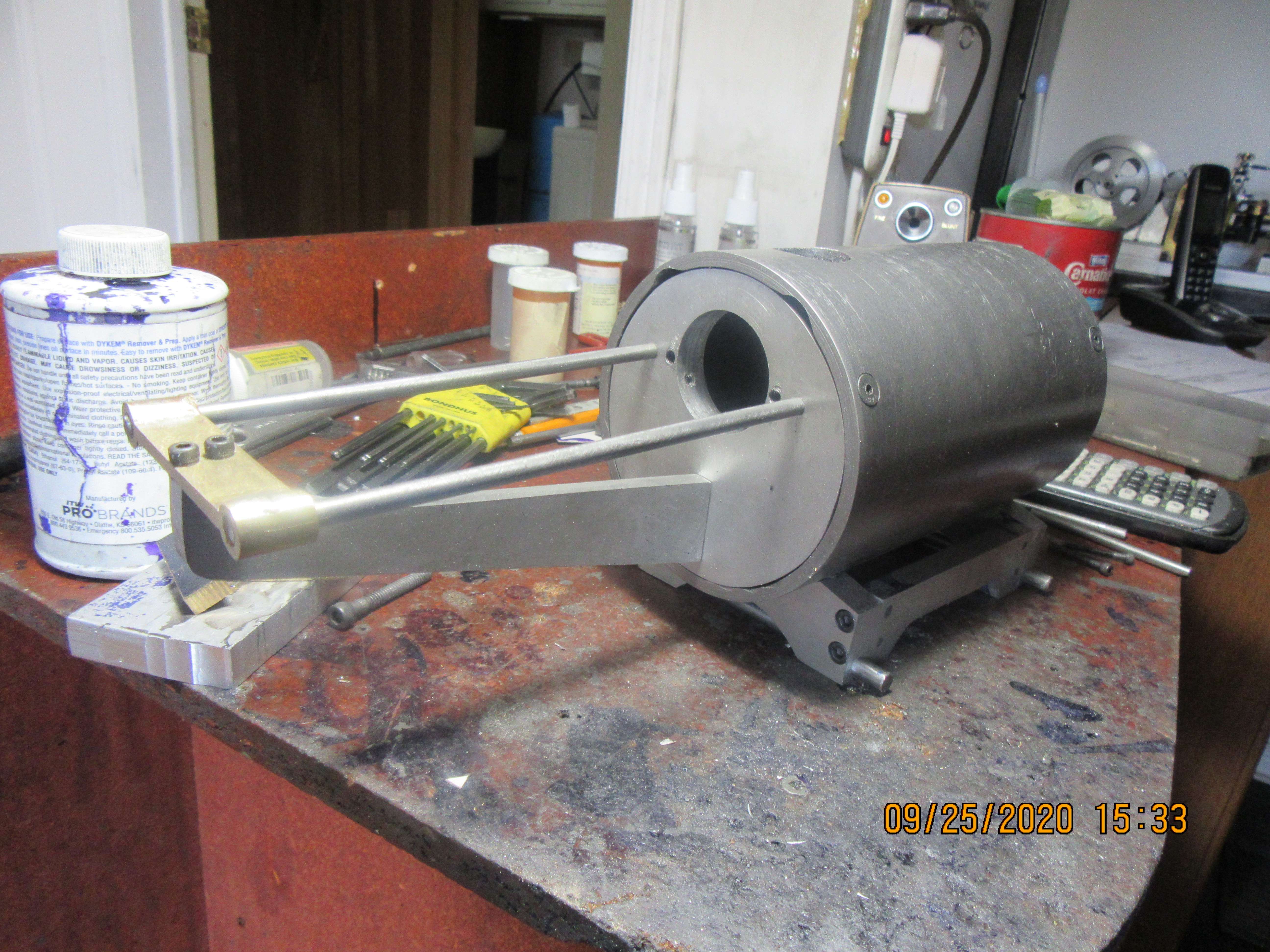

Joe--thank you for stopping by and leaving a comment. I don't get many people stopping by to say Hi anymore.---Brian
You know that saying about "Old dogs can't learn new tricks".--Not really true---I'm an old dog and I'm still learning new tricks. The cross-head on this engine (purple colored) has a long protrusion welded on top of it that operates the rotary valve. The fact that it is quite long will make the cross-head want to bind as it moves under pressure from the cylinder. This is technically called an "overturning moment". The way to overcome that binding is to make the area on the cross-head which slides along the cross-head guides as long as possible. Since that is probably the next thing I'm going to build, an update to the 3D model was called for.


VINCENT INGRAM
New Member
Joe--thank you for stopping by and leaving a comment. I don't get many people stopping by to say Hi anymore.---Brian
Hi Brian, I'm a long term lurker largely because my current 6 month project has overrun by about 4 and half years. I love your posts with explanations that even I can mostly understand - accompanied by drawings and photos that I find inspiring. Once my vehicle is up and running properly, I will be making a tentative foray into this world of engine-building. Thank you, Vincent.
Brian, I am guilty of reading and following a post and sometimes not comment, that must stop, I had been out for almost three weeks, I live in SW Louisiana, the Hurricane came through here and the the tornadoes that it spun off finished us off, 130 mile per hour wind, I stayed up and watched the wind was bad enough but when the leaves, tin and singles are going horizontal that when you know there is a tornado close by, I did better than most there I still have a house, back to the build, you have something that most people would die for is the ability to be able to draw it out and see what it will look at, talking about a dog learning new things that is one I know that I can't get and am to old to start that, I love your work, Joe
Today I finished the cross-head, and I'm quite pleased with the results. In the 3D model I posted yesterday, I thought that the extended bearing surfaces added to the cross-head looked kind of "clunky", so I changed the design after I had posted the model, and made the two extension pieces from round brass, which extend completely thru the rectangular body. They are loctited in place. The vertical part of the cross-head which operates the valve control rod is silver soldered to the cross-head main body.
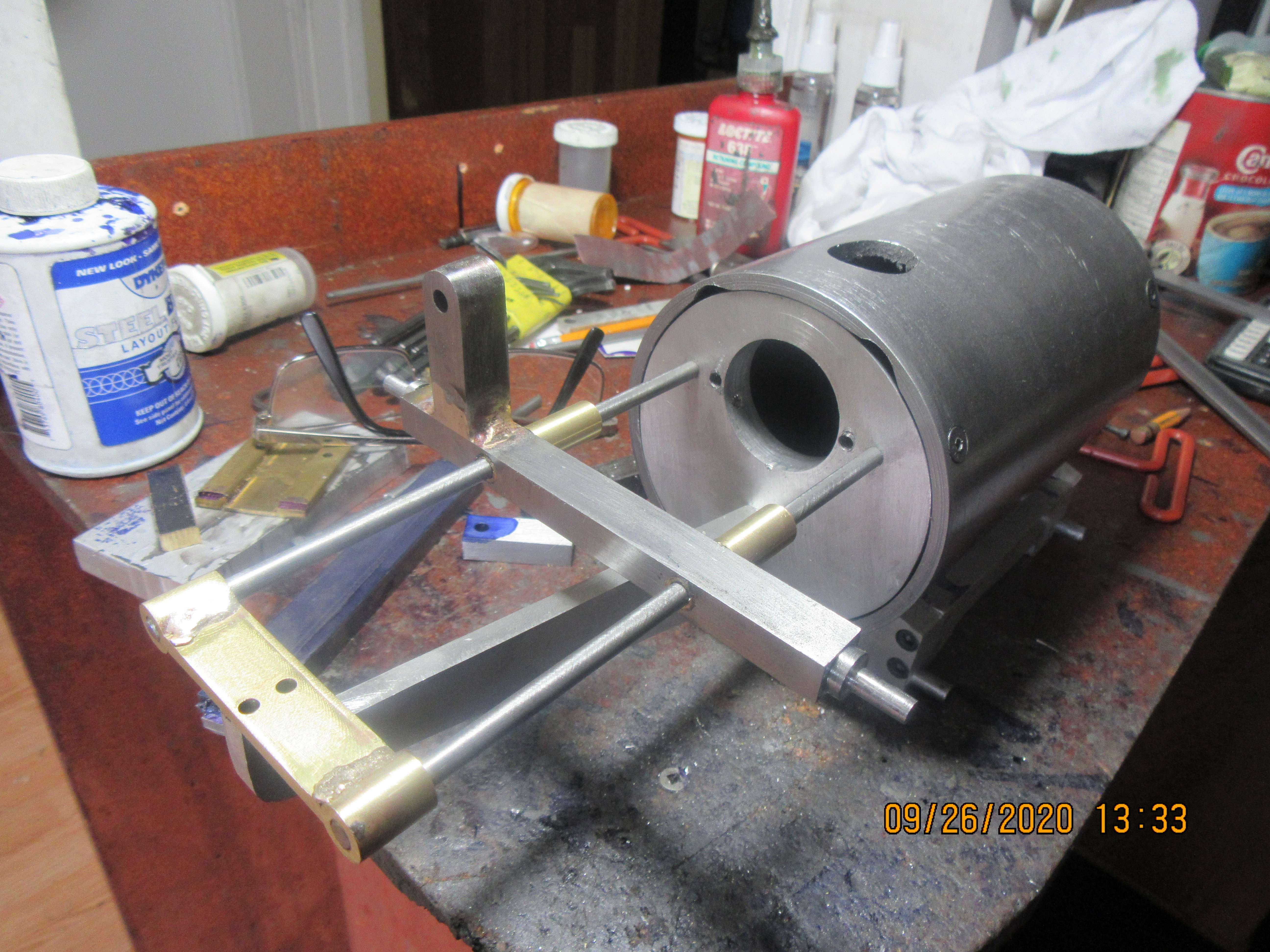

Today is a "banner day", as I have completed the cross-head and cross-head guides, and my air cylinder and rotary valve are moving the cross-head thru it's travel. Everything is a bit herky-jerky right now, because everything is new and stiff. Once it has been operated a number of times, any "tight spots" will be smoothed down and the travel will be much smoother.
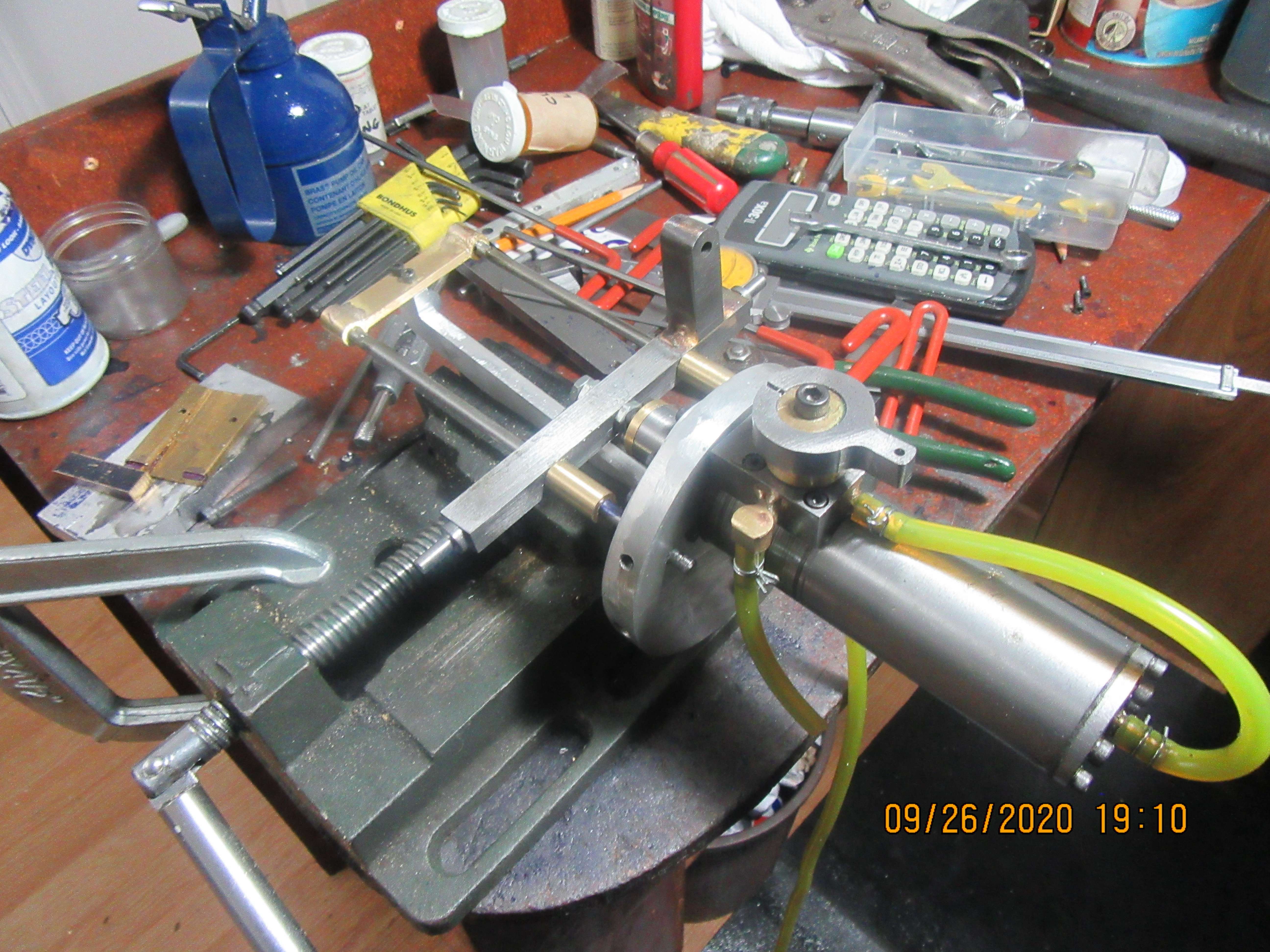

Great work Brian - I'd hardly call that "jerky" more like what you'd expect from an unconstrained air operated cylinder - once it starts driving a flywheel and has some "miles" on it - it will be just great.
Your prodigious workrate is inspirational - I'll be lurking for as long as this post continues.
Keep up the good work - especially the effort in posting your progress.
Regards - Ken
Your prodigious workrate is inspirational - I'll be lurking for as long as this post continues.
Keep up the good work - especially the effort in posting your progress.
Regards - Ken
Here is a fun little video of "running in' the cross-head and cross-head guides to make them operate smoothly without binding.
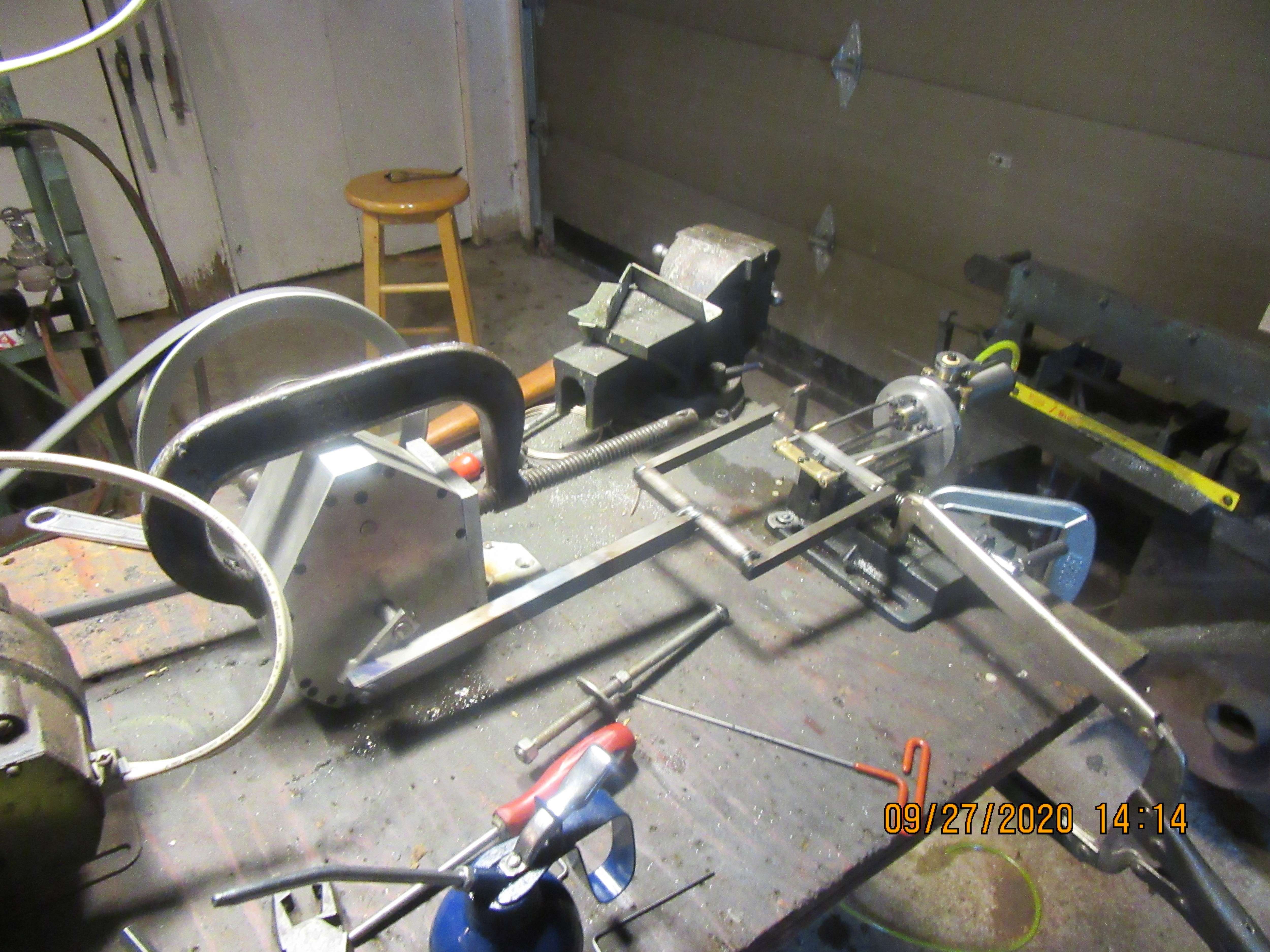

I have now reached the point where I can't do much more until I mount the shaft which the flywheel mounts to.--And--the exact position of that shaft depends totally on the meshing of all the gears. I only have to actually cut 3 gears--the ones attached to the wheels will be made as one extra thick gear, then split with my parting tool to yield two identical gears. I have a tiny bit of cosmetic work to do on the "boiler", but that can wait, for now. I can make all of the smaller gears tomorrow if I have the material to make them.
Similar threads
- Replies
- 386
- Views
- 142K




















































